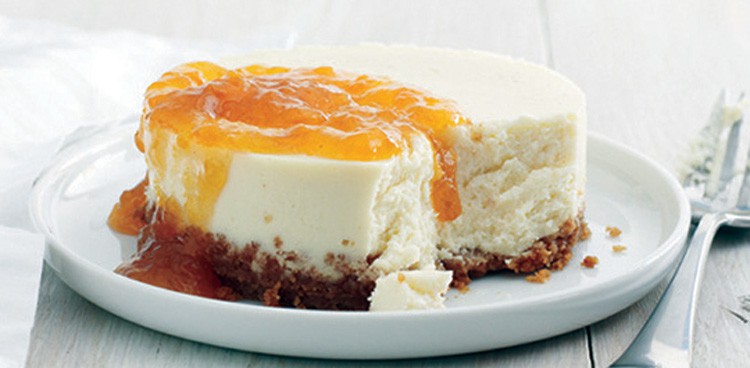
When New York blitzed the confectionary battlefield and claimed cheesecake superiority, the Germans fired back. Their not-so-secret weapon: Käsekuchen, a creamy, cheesy antiquated treat that’s been around long before New York even came to be. The battle goes far beyond baking technique; from crust to filling, these two baked bombshells are literally worlds apart.
In the late nineteenth century, proud New Yorker and foodie William Lawrence devised a cheese that was soft and spreadable–a revolution on cream cheese–all with the intention of stuffing it inside a cake. This cream cheese, patented by James Craft in 1928 as “Philadelphia style,” was a lighter, fluffier replacement for neufchâtel, the traditional European stuffing for cheesecake. Because the filling browned when baked, a crust top wasn’t needed–just the bottom–making the whole job easier. Thus, despite the intercity cream cheese naming conflict, the “New York” cheesecake was born.
This (presumably) made German confectioners angry, and therefore generations of immigrants have harped upon the deliciousness of Käsekuchen, the original sweet, cheesy treat. The filling here starts with quark–fresh cheese curd whipped with crème fraîche for flavor–and is noticeably thicker than the American version. Also, according to Karen Anderson, a chef and food blogger, “Though in desserts quark will be often paired with fruits, German cheesecake bakers tend to purism, the filling might have raisins, and sometimes other fruits, like sour cherries or apples.” The whole shebang is finished off with a crust–top and bottom–of leftover cookie crumbs, maintaining the old-world European tradition that nothing should go to waste.
And so the war rages on: fluffy versus rich, crusted versus crustless. Oh hey, did Italy mention something about mascarpone filling?
Read more about the beginnings of New York cheesecake at the Houston Press
Photo by James Yu



